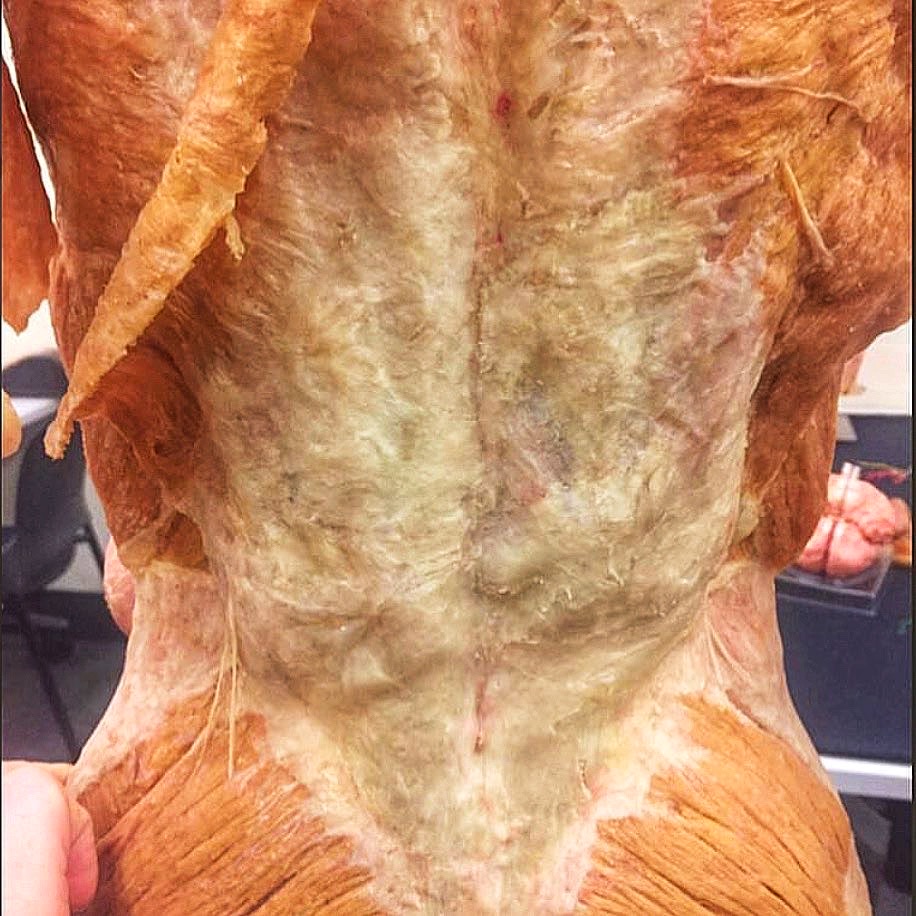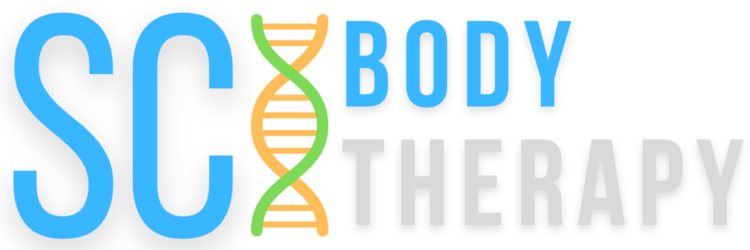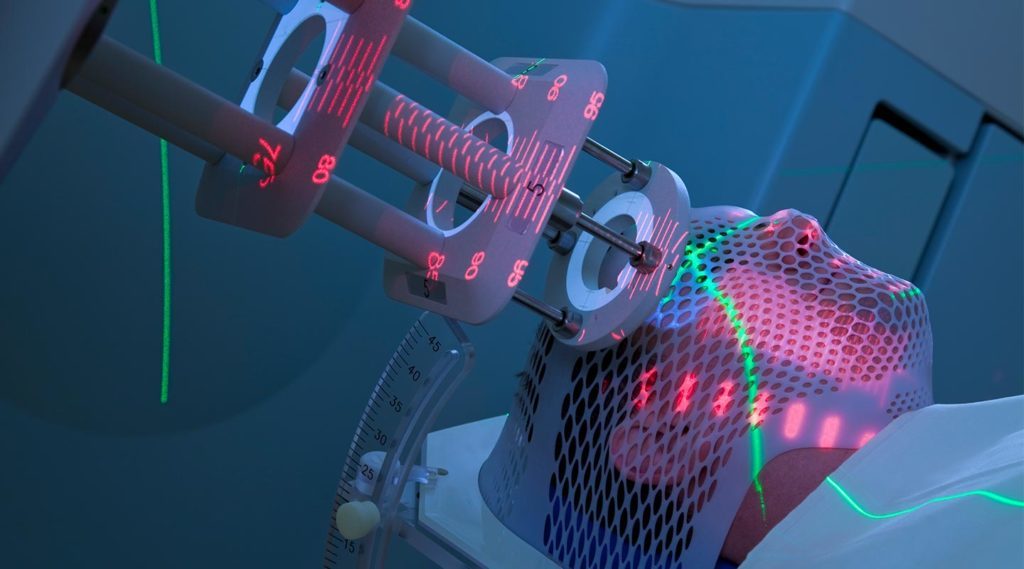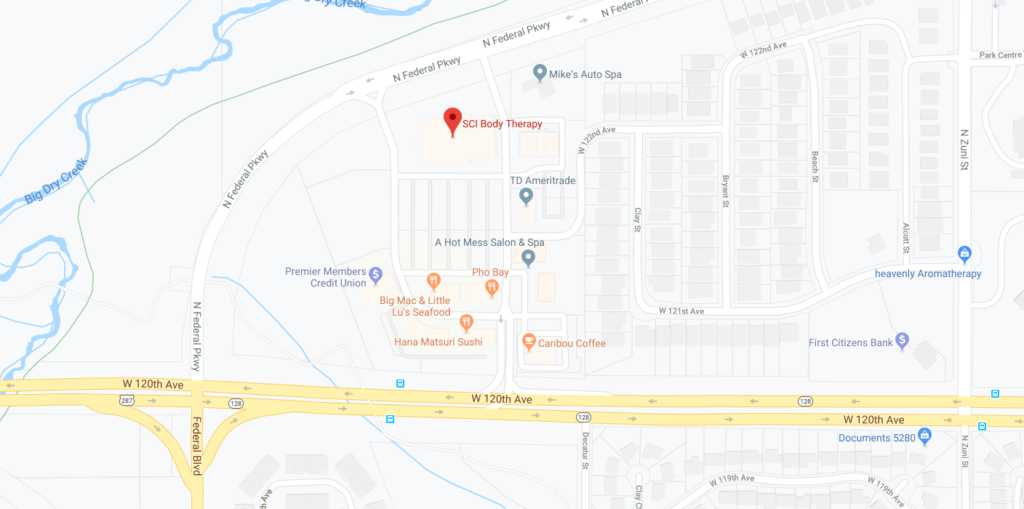We are going to start a little backward here. We are going to talk about what fascia is NOT. And going please know there is A LOT of confusion out there about this bit of anatomy.
The role of fascia is STRUCTURAL. By definition, it is not alive. I want to get that out of the way right at the top.

That fact may come as a shock to many of you, but please keep reading.
Fascia has also been called a sensory organ, but again if we look at the definition of an organ, it doesn’t fit. Many of the articles on the internet use the “organ” designation for the WOW factor and then go on to explain deeper in the text how it isn’t one.
As for the sensory part…that’s all nerves.
It’s frustrating and it’s weird. Especially, when you are a therapist trying to get a straight answer.
For reference, it is a bit like calling your bones and organ. They’re both connective tissue.
So is blood.
I don’t think we would call blood an organ, so I’m not sure why fascia needs that label either.
So what is so important about fascia and how do we apply it to massage and other manual therapies?
Fascia is a winding structure that is embedded with several types of “message generators” that flow and burrow through its layers and transitions.
There are stretch receptors (muscle spindles), pressure sensing corpuscles (Ruffini and Pacini), tension sensors (Golgi tendon organ endings) and free nerve endings running throughout the fascia.
The magic of fascia is found in the nerves that burrow through it.
Sadly, many clinicians (and clients) get caught up with trying to “fix” it.
1.) Therapists want to stretch it (which you can’t).
2.) Therapists want to melt it (insert eye roll).
3.) Worst of all therapists want to break it down (not gonna happen).
Let’s pause for a moment and think about why you would ever want to melt or breakdown a highly innervated tissue? What possible benefit could that serve?
The answer is none. It serves no benefit.
Some therapists justify crazy treatments based on the beliefs mentioned above. Gua-sha (scraping), “way too deep” tissue, old versions of rolfing, and structural integration.

————–
I SEE TREES, BUT NOT THE FOREST
I am an anatomy nerd, so I get hung up on the parts and pieces just like you probably do. I was this way with psoas for far too long (and then it was the paraspinal muscles).
If I just press here, I can stop that back pain.
If I find that one trigger point, I can stop this headache.
I played bodies like some weird version of anatomical battleship.
We do not interact with one muscle. One tendon. Or one nerve. Nothing exists in isolation in the body. Don’t forget that we are working WITH a person. And that person, at a fundamental level, is made out of neurons.
————–
DON’T BLAME A STRUCTURE
Many clinicians want to BLAME fascia for causing pain and dysfunction. They will explain that overuse, underuse, bad posture, weird posture, dehydration, etc has led to fascial dysfunctions.
All of that is misguided and puts the individual at odds with their own body. This is the same with trigger points and muscle tightness. Your body is not out to get you, even though it can feel that way.
Fascia is not a villain.
Through the nerves found in the fascia, we can send messages of safety, support, modulation, and pleasure. It can help us better interact with the MIND and the BODY of the person in front of us.
In massage, physical therapy, and other hands-on modalities we often get hung up on the bricks and mortar of the building. When we should be focusing on the switches and wiring.
————–
THE BODY SENSE
The receptors in our fascia play an integral role in proprioception. This is the “sixth sense” you may have never learned about. Proprioception allows us to know where our bodies and limbs are in physical space.
These receptors also exist in muscles and other tissues. So proprioception is a shared responsibility across more than one piece of anatomy.
Whenever we move our bodies, mechanoreceptors deform and activate, sending afferent information to the spinal cord and brain. These messages are sent to our central nervous system, where they are translated, interpreted, layered with emotions, and finally perceived.
Efferent signals are then sent to our muscles (and other organs) and generally move us toward or away from a stimulus (this is a very basic breakdown).
This conversation happens quickly and constantly. It makes things like walking, running, and dancing possible. It also plays a part in fine motor operations like handwriting.
Interestingly, proprioception (also pain, and muscle tightness) can be inhibited by something as simple as a glass of wine. Proprioception can also be destroyed entirely by disease processes that damage the peripheral nervous system.
This makes it so that a person cannot move unless they can physically see the body part they want to move. If their eyes are closed, they completely lose track of where their limbs are. It is a fascinating and horrifying condition.
The nerves in superficial fascia may be the perfect pathway to help us modulate muscle tightness, interferes with pain, and disrupt other “messages” coming from noisy tissue.
Remember that pain and tightness are not physical things. They are perceptions generated by the brain when it is fed signals from the peripheral nervous system. This does not mean those sensations aren’t real, it simply means you have more control over them than you have been led to believe.
If you take nothing else away from this deep dive, let it be that last sentence.
————–
NUTS AND BOLTS
Structurally fascia is an everywhere tissue. It loops and flows like a Mobius strip from superficial to deep to visceral layers. It attaches, stabilizes, encloses, and separates muscles and internal organs from one another.
A simple analogy is to think of it as a plastic wrap (with the elasticity but without the plastic deformation).
Fascia is made up of fibrous connective tissue containing closely packed bundles of collagen fibers oriented in a wavy pattern that usually runs parallel to the direction of pull.
The material of fascia itself is exuded by fibroblasts. And in case you don’t know a fibroblast is a cell that synthesizes the extracellular matrix and collagen. It’s a goo making machine!
Fascia is has a natural level of flexibility and give, but it is not to the degree that you may have been taught. Fascia is less like a bungee cord and more like the rubber of a car tire.
Fascia is INCREDIBLY STRONG. And because it is a support structure it is also highly resistant to change.
Despite common myths and misconceptions, it does not stretch. It does not melt. And it cannot be broken down or reorganized by hand (or with tools).
I know many of you are cringing right now. You were taught that fascia melts, deforms, and can be broken-down/reorganized. It can get bound up, cause adhesions, be glued together by spontaneous forming scar tissue.
This simply isn’t true.
I’m going to implore you to use critical thinking here and be skeptical with me for a few minutes. If fascia could be melted by hand, what would happen to you when you took a hot bath or sat in a sauna? What about a hot summer day?
What if it could be broken down by brute force? What would happen when a powerlifter picked up 600 pounds. Think of all the force and tension on their skin, hands, and joints (all with fascia flowing through and around them).
Can any therapist generate 600 pounds of force with their hands? And if the underlying tissue is changing wouldn’t the skin also be permanently changed too.
What would you say if I told you that fascial layers are nearly is frictionless? Because they are. One layer slides easily over the other. This frictionless surface makes it so muscles can slide over each other easily even though they simultaneously bound tightly together in groups.
Now imagine trying to change the structure of a car tire with vaseline on your hands. That’s the barrier some therapists say they can overcome with their bare hands.
If you need a clinically relevant example of fascia not changing have a look at compartment syndrome. Fascia won’t even fail when it would benefit you. It has to be cut apart.
And now for my personal favorite, scar tissue. Yes, it’s a real thing. But why in the world would you think you could break it down? I’m going to give you hulk-like strength and unleash you on a hapless client.
Your muscles bulge and the collagen fibers begin to sheer apart. The nerves at the border of the scar tissue begin to stretch and this causes them to fire. Eventually, the nerves fail and tear, but not before they send plenty of feedback to the brain.
Blood vessels rupture and cells burst open as you break down the scar tissue. This cellular spillage releases cytokines and the inflammation process begins to kick in. White blood cells show roll in and begin the cleanup process. Then fibroblasts return and repair the area with a lattice collagen fibers.
Also, known as scar tissue.
This phenomenon is an issue even in SURGICAL revisions that are designed to de-scar an area. They go in and perform a literal surgical strike on the bound up layers. The joint is moving freely, healing is initiated, and low and behold, the body rebuilds the area with scar tissue.
This is an important area where we need to know our limitations and be part of the reeducation of the clients we encounter.
————–
CLOSING
I’m hopeful that you will dig into this topic for yourself, but please be wary of things that sound too good to be true or don’t jive with current anatomical knowledge.
I can comfortably say that if your reading doesn’t stress the importance of the nervous system it is likely out of date. If you are finding information that is less focused on “issues in tissues” and more focused on the whole person, you are on the right track. If there is mention of the biopsychosocial (BPS) framework…it might be pure gold.
————–
Further Reading and References:
Selley’s Anatomy and Physiology, 3D4 Medical Complete Anatomy, Dermoneuro Modulation by Diana Jacobs
Fascia Science Review
https://www.painscience.com/articles/does-fascia-matter.php
Fascia Myths
Video Link: Lost Proprioception
Fascia as a Sense Organ
https://www.researchgate.net/publication/319182467_FASCIA_AS_A_SENSORY_ORGAN_Clinical_Applications






